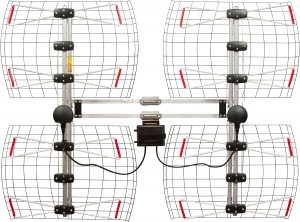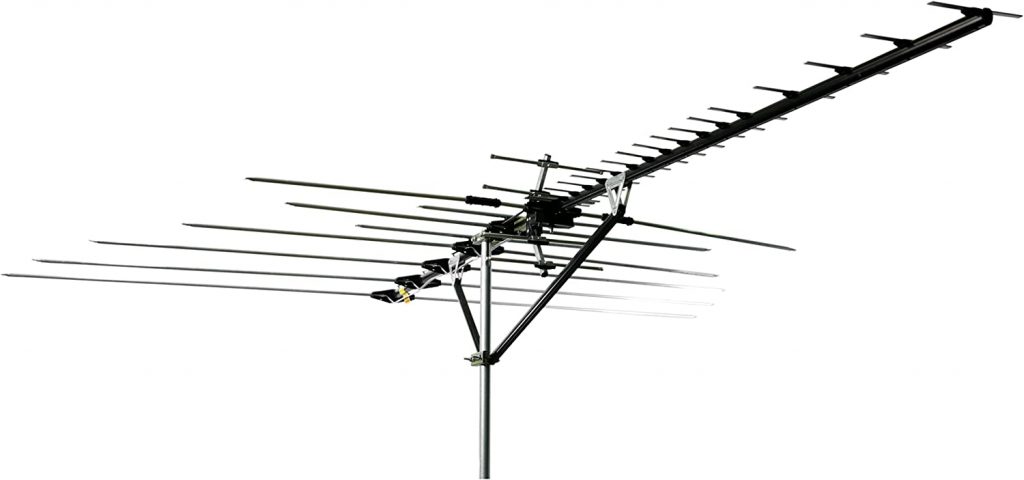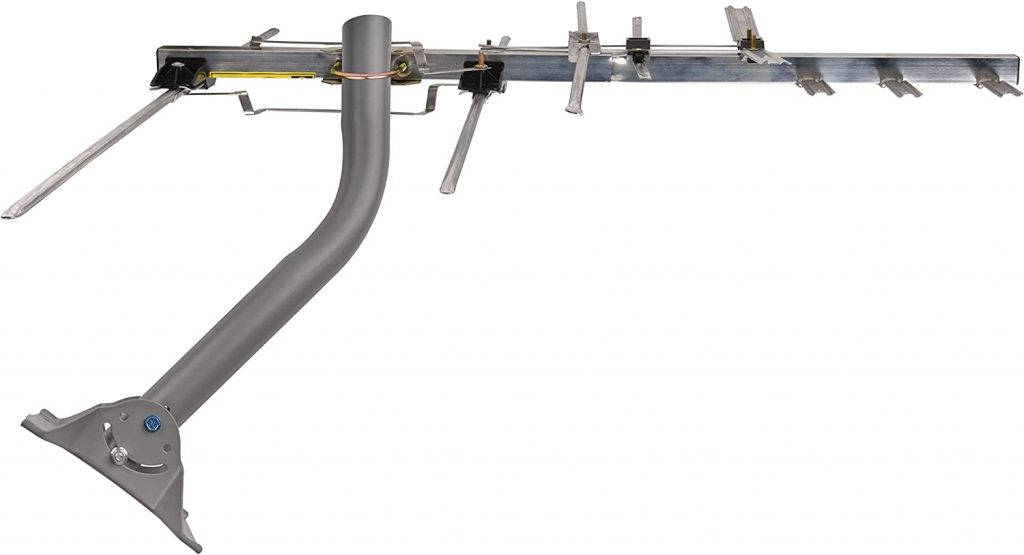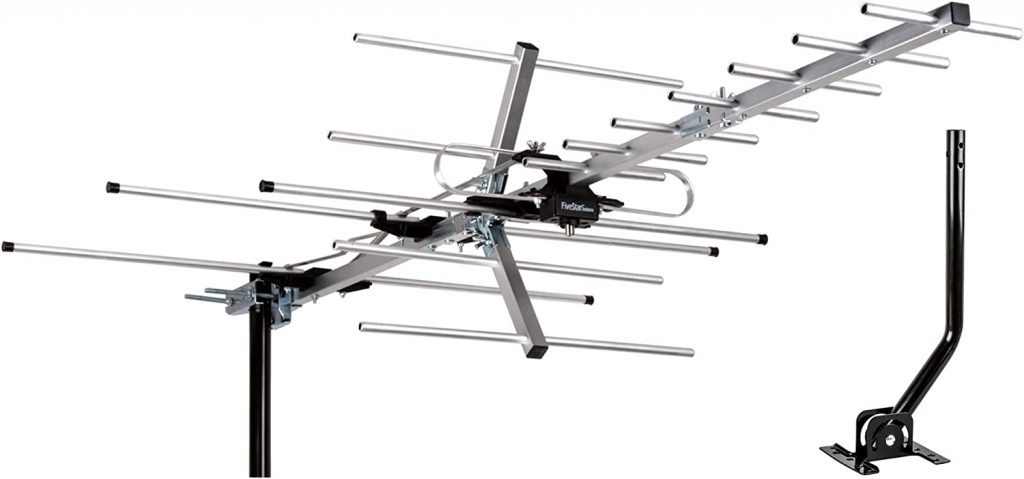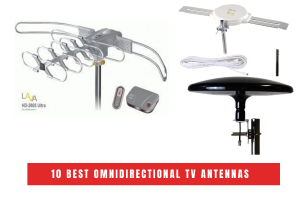While cable TV is struggling in this age of streaming, classic over-the-air broadcasts are still thriving.
To get the best out of them, you will need a TV antenna mounted on your roof.
Many are replacing expensive cable plans with streaming services and are now finding that this old technology can fill the gap in local content you won’t find through Apple TV+ or Netflix.
This is largely due to the convenience of compact, portable antennas such as the Mohu Leaf.
However, for those who live further away from major cities and need more juice, TV antennas remain the same reliable workhorses they were in the past.
The basic hardware design of aerial antennas is still in use today and can do more than ever before digital broadcasts have made them more efficient.
Although they may seem intimidating, you don’t have to be an engineer to install them.
We’re happy to help you choose the best rural TV antennas to meet your needs and budget.
Best Outdoor TV Antenna For Rural Areas:
[supsystic-price-table id=10]How did we choose the Best Outdoor TV Antenna For Rural Areas?
You will find the best TV antenna that captures all the broadcasts you desire, at a reasonable cost and with minimal distortion.
This means that simpler antennas will work well enough for most people.
This list is for antennas that are used in rural areas. You’ll likely need more power.
We analyzed customer and professional reviews to find the best long-range TV antennas available.
These antennas are all priced at different prices and have different features so you can meet your specific needs wherever you may be.
What are the main considerations before purchasing a TV antenna for rural areas
An antenna that has enough power and range to pick up all channels is necessary at a very basic level.
You can mount these small, flat antennas to your window or wall, but rural customers will need something larger.
To compensate for the distance you live from the broadcast source or physical interference (such as hills and trees), the antenna will be mounted higher up.
While most of our recommendations include some mounting hardware, depending on your needs you might need additional brackets, masts, or longer cables to secure the antenna exactly where you want it to be.
You should plan accordingly in order to do this safely. If you need help, we can assist.
To get the best signal possible, you may have to play around with the orientation and location of the antennas.
What are you most interested in?
Local broadcasts can be picked up by TV antennas.
This is ideal for local news and sports. It also allows public access to complement the large, generic streaming services.
An antenna should be able to pick up at least local broadcasts from FOX, CBS and ABC in the United States.
The options available to you will depend on where you live, and proximity to major cities is often a good indicator of how many options you have.
You can use an online tool to find out what is available in your area, such as AntennaWeb or DTV Receipt Maps.
These sites will give you a list of stations that you can pick up.
They also provide information about the strength, type, and direction of the signal.
This will help you decide how strong an antenna you will need as well as the direction it should be oriented.
But, won’t it be bad image quality?
You are more likely to have memories of manipulating “rabbit ears” antennas on top of your TV set in order to get a static image, albeit fuzzy, out of it. All U.S. TV stations now broadcast digital signals instead of the analog format, following a 2009 U.S. Government mandate.
Analog broadcasts transmit the entire image for each frame (30 times per second), while digital signals are much more efficient and only include changes from one frame to another.
Major networks broadcast in clear, vibrant FullHD (1920x1080p).
Because cable providers bundle so many channels over one landline, broadcasts over the air are often less compressed (meaning that they are clearer than their cable counterparts).
To enjoy the superior visual quality of over-the-air broadcasts, you don’t have to understand how they work.
Gain and range
Range and gain are the two main stats to consider when choosing a TV antenna for rural areas.
It is obvious that range indicates how far away an antenna can pick up a broadcast source.
Look at broadcast maps to ensure that your antenna has enough range to cover all stations you wish to pick up.
The antenna’s gain (measured in decibels/dB), indicates the antenna’s ability to pick up distant signals in a specific direction.
Although too high gain can be detrimental when trying to pick up signals omnidirectionally in a given direction, this list is rural-focused and we expect more distant signals from certain directions.
A higher gain will usually mean a stronger, clearer signal.
VHF and UHF
The government regulates broadcasts to ensure they transmit in specific frequency bands.
Most stations are now UHF (ultrahigh frequency), and less and less use the VHF (very high frequency) legacy band, which is often subdivided into Hi-V and Lo-V.
VHF stations can be picked up by UHF antennas, especially at higher frequencies.
However, if you have enough stations that are Lo-V, it is worth making sure your antenna picks them both.
Best TV Antennas for Rural Areas: Reviews & Recommendations
Over-the-air TV is alive and well in 21st-century America, contrary to what you might think.
We have a variety of options for you to add local flavor to your streaming services.
you maybe want to read: 10 Best Indoor TV Antennas
Best Overall: Antennas Direct 8 Element Bowtie
Why it was selected: The Antennas Direct 8 Element Bowtie (or Antennas Direct 8 Element Bowtie) is large, powerful and flexible enough for almost any rural TV need.
Specifics
- Range:70 Miles
- UHF/VHF Both
- Installation: Attic/Outdoor
- Gain 17.4dB
Pros
- Amazing performance
- Flexibility through multiple panels
- Parts are covered by a lifetime warranty
Cons
- Large
- Mounting hardware is included, but mount and coaxial cable required
The Antennas Direct 8 Element Bowtie antenna makes it hard to miss.
It has four reflecting panels you can move along two rotating shafts.
You can either place them at a greater angle to pick up distant signals or you can focus them along two rotating shafts.
It has a 70-mile range and 17.4 decibels, making it powerful enough to meet most people’s needs.
Customers have reported that although it will require additional hardware to mount, the Antennas direct customer service team is responsive and helpful in making sure everything is optimized and properly configured.
Long range: Five Star Outdoor HDTV Antenna
Why it was chosen: Five Star’s Outdoor Antenna offers 360-degree coverage for as low as $200.
Specifics
- Range: 200 Miles
- UHF/VHF Both
- Installation: Outdoor
- Gain 35 – 35 dB(boosted)
Pros
- Amazing long-range performance
- 360-degree coverage by motorized vehicles
- Hardware and mounting pole included
Cons
- It is a complex assembly
The Five Star Outdoor Digital Antenna can travel up to 200 miles.
The six reflector elements can be aligned in one direction to provide 360-degree coverage.
However, the entire assembly is motorized.
Although the motorized shaft is a bit more difficult than other antennas, the cost savings and flexibility are well worth the effort.
Most durable Masterpiece Series CM-5020 Masterpiece Series
Why it was chosen: Five Star’s Outdoor Antenna offers 360-degree coverage for as low as $200.
Specifics
- Range: 100 Miles
- UHF/VHF Both
- Installation: Outdoor
- Gain16 dB
Pros
- Long-range
- Weather-resistant
- Boom included
Cons
- Installation can be tricky
- Unidirectional
- Expensive
Channel Master’s Masterpiece Series is classic in design, construction quality, and performance at a premium cost.
It is a classic “Yagi” (or simply “Yagi”) antenna.
This particular, fixed-and-unidirectional design was created by Japanese researchers in the 1920s.
It is very efficient in one direction which makes it ideal for rural areas where you need to point toward the nearest major metro area for the majority of your signals.
This Channel Master model has a 100-mile range, solid performance, and is backed by a reliable brand.
It’s also rated for 30 pounds of wind force and weather resistance.
Although the installation may take a little longer than other antennas you’ll likely never need another one.
Long-range best value: RCA Compact Yagi
Why it was selected: A well-known brand offers solid performance and simple assembly at an affordable price.
Specifics
- Range:70 Miles
- UHF/VHF Both
- Installation: Outdoor/Attic
- Gain15
Pros
- Great value
- Compact
- Simple assembly
Cons
- Unidirectional
- Coaxial cable not included
RCA, an electronics brand that dates back to the 20th century, is basically American royalty.
The Yagi, a compact TV antenna, is a popular choice on Amazon.
It offers great performance and easy assembly for a reasonable price.
This pre-assembled mount can be assembled in just a few minutes.
The best budget: 5-Star Indoor/Outdoor Yagi Antenna
Why it was chosen: Five Star offers a classic, solid Yagi at an affordable price.
Specifics
- Range: 200 miles*
- UHF/VHF Both
- Installation: Attic/Outdoor
- Gain:12 dB
Pros
- Solid performance
- It’s affordable
Cons
- Coaxial cable included in sub-par
- Unidirectional
The Five-Star Indoor/Outdoor Yag antenna costs just $50 and still does the job.
According to customer reviews, the advertised 200-mile range may be a little too ambitious. However, it is said to last for at least 100 miles.
You will need to orient the Yagi antenna correctly to get the best performance.
Multiple reviews also mentioned that the coaxial cable included in the package needed to be replaced.
However, if you don’t want to spend a lot but still need to cover a large distance, this antenna is a good choice.
FAQs
Q. Do HDTV Antennas Work in Rural Areas?
Yes! Yes! Some stations broadcast in 4K. Some antennas, like HDMI cables and other modern antennas, are already listing compatibility with 8K.
Q. Do 100-mile antennas work in rural areas?
Yes, 100 miles is an effective range for most long-range antennas.
This should be enough for most rural areas. However, make sure you check the FTC map and other tools to ensure that all stations are covered.
Q. How can I determine which antenna to purchase for rural areas?
As mentioned above, you can use various tools to map all your nearest stations.
This is the best way for you to determine the range, strength and directionality of the antenna that suits your needs.
Final thoughts about the best TV antennas in rural areas
OTA broadcasting doesn’t seem to be going away.
A roof-mounted TV antenna is still the best way to access all of the free local content that can be added to your streaming services.
Rural areas will require something other than the flat, window-mounted antennas in urban apartments.
However, with a little more effort, you can mount it on your roof or attic and enjoy crisp HD local sports and news.

Hi! I am Martha D. I have over 20 years of experience in troubleshooting technical problems. I created Technipages so I could share my adventures in troubleshooting, and
I hope readers find the solutions posted on this site as useful as I do


